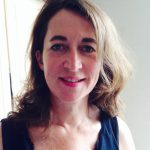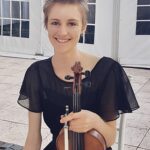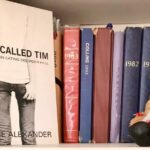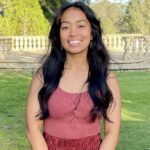Bite Sized: a mother’s story
Bite Sized: a mother’s story
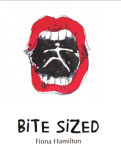 Bite Sized is a mother’s perspective on her daughter’s eating disorder.
Bite Sized is a mother’s perspective on her daughter’s eating disorder.
The first page reads:
One day our daughter got anorexia
The second page is equally sparse:
Of course, it wasn’t that simple
When a child has a serious illness, like an eating disorder, the parents-cum-caregivers need to heal, too. Healing comes in many forms. Fiona Hamilton found a creative way and shares it in this guest post:
My daughter became unwell aged eleven. In the painful chaos following diagnosis, there was time only to do whatever had to be done. Common media myths about anorexia proved fragile in the glare of first-hand experience.
Reading material?
I reached out for whatever information and wisdom I could find, desperate to understand, to know how to help. The following were helpful:
* Website of the UK charity B-eat
* fellow parents online
* ‘Eating Disorders – A Parent’s Guide’ (Waugh & Lask, 2004)
* ‘Skills-based Learning for Caring for a Loved One with an Eating Disorder’ (Treasure et al, 2007)
Easily-digested nuggets of information were all that I could face at times. I found most clinical books too dense at the end of a busy day.
First person stories
First person accounts were interesting but I feared too many bleak truths would undermine ability to cope. When a friend gave me Shelia MacLeod’s ‘The Art of Starvation’ (1981), I flicked to the chapter entitled ‘Recovery’. A turning point for her was when she noticed a sunflower in a garden. This crucial moment was so subtle and personal. If the shift towards health was due to unconscious impulses, what role was there for the carer?
Breathing space
Eight years later, a small sequence of words dropped quietly into my head. I wrote them down. I didn’t know at that point that a book would come of them. Bite Sized was published in 2014 by Vala Publishers. This story is told in bite-sized chunks.
A reader pointed out to me how regular turning of pages – because of the space around the words – introduces a rhythm. A breathing space. A pause. She noticed her own breath more consciously.
It seems to me that connecting body and mind is apt, since anorexia tugs them apart, forcing all involved into a topsy-turvy world:
It means ‘loss of appetite’
[but it’s]
the hungriest thing in the world
My daughter felt huge while underweight, ‘full when empty’. Rational descriptions were not enough.
Space to feel and think
The wordless space on the page feels to me a nourishing space. One that felt protective as I grappled with whether to share my story.
It is space to contain as well as air the questions and unknowns awaiting further knowledge from scientific research, genetics, and neuroscience.
Who can say they know where the beginning is
or where the end?
Who can say where mind meets body
and how they dance together?
I have learned many things and reading and writing have been a vital part of that. I learned that nourishment comes in different forms. ‘Firm but gentle’ worked better than tackling anorexia head-on in a combative way. Humour plays a part too. Absurd moments and sparkling ones have lifted us in dark times.
Yellow and purple pansies
In my story, a crowd of yellow and purple pansies play a crucial part. They are ‘ordinary and bright and very real’. Noticing them deeply prompts an unexpected shift towards hope and awareness of the power of love.
Bite Sized ends not with answers but with reflections. I have seen my daughter emerge from a very dark place to much more life and health, though the struggles are not over.
I and others are using Bite Sized as a springboard in a programme of workshops in education and healthcare settings. We aim to open up conversations and bring ‘air into the room’. I hope this story speaks to others in similar situations, helps to dissolve stigma, and contributes to understanding and support for those who suffer and those around them.
* Bite Sized by Fiona Hamilton (published 2014) is available from Vala Publishers, Amazon, and via bookshops.
* Read a review in Journal of Eating Disorders here.
About Fiona Hamilton
Fiona lives in Bristol, UK with her husband and three children. She has written two poetry collections ‘Poems for People’ and ‘Skinandi’ and teaches therapeutic creative writing with Metanoia Institute and Orchard Foundation. She enjoys swimming in a lake in the middle of the vibrant city.
References
B-eat (beating eating disorders) http://www.b-eat.co.uk
Bryant-Waugh, R. & Lask, B. (2004) Eating Disorders: a parents’ guide. East Sussex: Brunner-Routledge.
Treasure, J., Smith, G. & Crane, A (2007) Skills-based learning for Caring for a Loved One with an Eating Disorder: The New Maudsley Method. Oxford: Routledge.
MacLeod, S. (1981) The Art of Starvation. London: Virago
